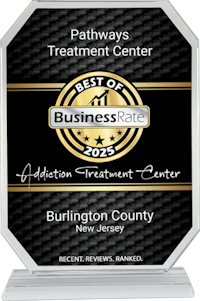Many people face both mental health challenges and problems with substance use at the same time. This is called having co-occurring disorders, which means two or more conditions happen together. Treating both at once is important, but it can be confusing to know what kind of care helps most.
At Pathways Treatment Center, services are designed for people with co-occurring disorders. The goal is to make recovery more manageable by using an approach called integrated treatment. This way, each person receives support that addresses both mental health and substance use, all under one coordinated plan.
Understanding what integrated treatment means can help people and families know what to expect from care that is truly connected and organized. Dual diagnosis treatment programs often provide support for co-occurring mental health and substance use issues under one coordinated plan.
What is Integrated Treatment for Co-Occurring Disorders?

Integrated treatment is a coordinated approach in which both mental health and substance use disorders are treated together by a single team, using one unified plan. Rather than having separate professionals (like a therapist for depression and a counselor for addiction) working independently, integrated treatment brings everyone together so that care is consistent and connected.
Co-occurring disorders, sometimes called dual diagnosis, mean someone experiences both a mental health disorder (such as depression, anxiety, or bipolar disorder) and a substance use disorder (like alcohol or drug addiction) at the same time.
Integrated treatment uses a “one team, one plan, one message” approach. This means:
- Unified approach: Both mental health and substance use disorders are addressed at the same time, not one after the other.
- Single treatment team: Professionals trained in both areas work together, so all parts of care are connected.
- Coordinated care plan: There is one plan that includes all goals and steps for both mental health and substance use recovery.
- Consistent messaging: The team shares the same information and guidance, so there is no confusion or mixed advice.
This is different from traditional parallel treatment, where a person might see separate providers for mental health and addiction care. In parallel treatment, the two teams may not share information or plans, which can lead to conflicting advice or gaps in care.
Integrated treatment helps keep everything organized, so the path to recovery feels less overwhelming and more focused.
Why Integrated Treatment Matters in Recovery
Researchers have found that treating mental health and substance use disorders at the same time, through integrated treatment, leads to better outcomes than treating each condition separately. This approach is based on evidence gathered from studies comparing integrated care with traditional, separate care for each disorder.
- Better psychiatric outcomes: A 2023 study found that people receiving integrated treatment had much greater reductions in psychiatric symptoms, especially for conditions like post-traumatic stress disorder (PTSD), compared to those receiving separate treatments.
- Reduced treatment confusion: Integrated treatment means individuals do not receive mixed or conflicting advice from different providers, which often happens when care is not coordinated.
- Higher engagement rates: People are more likely to finish treatment and stay involved when the process is straightforward, with one team handling all aspects of care.
- Addresses root causes: Integrated care looks at how mental health and substance use problems are connected, making it possible to treat both issues together rather than as unrelated problems.
- Prevents treatment gaps: With a single, unified team and plan, people are less likely to be lost or overlooked between different care systems.
Untreated mental health issues, such as depression or anxiety, can lead to relapse in substance use, and ongoing substance use can make mental health symptoms worse. Integrated treatment helps manage both sides of this relationship, which reduces the risk of repeated cycles of relapse.
Key Elements of an Integrated Treatment Model
Integrated treatment is not simply having mental health and addiction services in the same place. It involves close collaboration, shared expertise, and clear communication among professionals to ensure all aspects of a person’s health are addressed at the same time. The main elements are outlined below.
Staff in an integrated model have training in both addiction treatment and mental health care. They are not limited to one specialty. This allows them to recognize how mental health symptoms and substance use influence each other and to respond to changes in both areas.
A single care plan is developed to address both mental health and substance use disorders. The plan has goals and steps that are designed to work with each other, so that improvements in one area support progress in the other. All interventions are coordinated so there is no overlap or contradiction.
Therapy and medication are both used in an integrated way. Counseling, skills training, and group therapy are coordinated with medication management. This approach helps prevent drug interactions and ensures that no part of the treatment works against another part. All care is managed by the same team, which helps maintain safe and effective support for both conditions.
How Integrated Treatment for Co-Occurring Disorders Works in Practice
Integrated treatment begins with a screening and assessment process. One team evaluates both mental health and substance use. This evaluation looks for symptoms of conditions like anxiety, depression, or addiction, and also explores if these symptoms are connected. The team gathers information about a person’s medical history, current challenges, and any previous treatments. This process helps to create a clear picture of how the two types of disorders interact in a person’s life.
Integrated treatment uses therapy sessions that are designed for people who have both mental health and substance use disorders. Individual sessions focus on how thoughts, feelings, and behaviors relate to both conditions at the same time. Group sessions bring together people with similar challenges, allowing them to share and learn skills for managing both mental health symptoms and substance use. Therapists use methods that address both conditions together, rather than holding separate meetings for each.
Integrated treatment often involves support for families and communities. Family members can learn about both mental health and substance use disorders, which helps them understand what their loved one is experiencing. Treatment teams provide education to families and help connect them to resources outside of the clinical setting. Community support may include links to housing, employment, or peer support groups, so recovery continues beyond the treatment center.
How Long Does Integrated Treatment Take
The length of integrated treatment varies for each person based on their needs, the severity of their mental health and substance use disorders, and how they respond to care. Integrated treatment usually involves several phases, which may use different levels of support, such as Partial Hospitalization (PHP), Intensive Outpatient (IOP), or standard Outpatient care.
Partial Hospitalization (PHP) offers a structured schedule for therapy and other services without the need for overnight stays.
The early engagement phase focuses on helping a person feel safe, supported, and motivated to continue treatment. This phase often takes place in higher-intensity settings like PHP or IOP and can last from a few weeks to a few months.
Intensive Outpatient (IOP) allows individuals to maintain their daily responsibilities while receiving structured care. The main goal is stabilization—addressing immediate risks, starting to manage symptoms, and building trust with the care team.
Active treatment is the main part of integrated care. During this phase, the treatment team works with the person to address both mental health and substance use together. Therapy, medication management, and learning new coping skills happen during this stage. Active treatment often lasts several months and is adapted to the person’s progress and ongoing needs.
Continuing care is the phase after active treatment. Support and monitoring continue but with less intensity. The person may attend fewer appointments, but the focus remains on relapse prevention and maintaining gains. Continuing care can last for many months or even years, depending on progress and life changes.
Integrated treatment for co-occurring disorders typically lasts longer than treatment for a single disorder. Extended engagement in integrated care is linked to improved stability and sustained recovery over time.
Evidence-Based Therapies and Interventions
Integrated treatment for co-occurring disorders uses several evidence-based therapies that target both mental health and substance use conditions at the same time. The main approaches include Cognitive Behavioral Therapy (CBT), motivational approaches, and Medication Assisted Treatment (MAT). Each of these methods is adapted to address the unique challenges people face when dealing with both mental health and substance use issues.
Cognitive Behavioral Therapy, or CBT, is a form of talk therapy that focuses on the connection between thoughts, feelings, and behaviors.
CBT for addiction emphasizes identifying negative thought patterns and replacing them with healthier coping strategies. In integrated treatment, CBT helps people identify patterns of thinking that contribute to both mental health symptoms, such as depression or anxiety, and substance use triggers. By learning to recognize and adjust these thought patterns, individuals can develop healthier coping strategies and reduce the desire to use substances.
Motivational approaches, such as motivational interviewing and motivational enhancement, are conversational techniques used by clinicians to help people explore and resolve feelings about change. These methods are designed to support individuals in building their own reasons for changing both their substance use and their approach to mental health management. The goal is to increase a person’s readiness to take steps toward recovery, without pressure or confrontation.
Medication Assisted Treatment, or MAT, involves the use of medications, often combined with therapy, to treat both mental health and substance use disorders.
Medication-assisted treatment programs can be crucial for reducing cravings and stabilizing overall functioning in recovery. When properly coordinated, MAT can help stabilize mood, reduce mental health symptoms, and decrease cravings or withdrawal symptoms from substances. Careful planning is used to ensure that medications for both conditions work together safely, avoiding interactions that could make symptoms worse.
| Therapy Type | Mental Health Benefits | Substance Use Benefits
|
| CBT | Reduces depression/anxiety symptoms | Identifies and changes substance use triggers |
| Motivational Interviewing | Increases engagement in mental health treatment | Builds motivation to reduce/stop substance use |
| MAT | Stabilizes psychiatric symptoms | Reduces cravings and withdrawal |
Common Misconceptions About Integrated Treatment
- “It’s just having both types of doctors in the same building.”: Integrated treatment is not simply about proximity. It is a coordinated process that involves ongoing planning, shared information, and joint decision-making among professionals who all address mental health and substance use together.
- “It takes longer than treating one condition at a time”: The engagement phase may be longer because both conditions are addressed together, but studies show that overall recovery time is often shorter compared to treating each disorder separately.
- “Insurance won’t cover it”: Most insurance plans provide coverage for integrated treatment if it is medically necessary for co-occurring mental health and substance use disorders.
- “It’s only for severe mental illness”: Integrated treatment is designed for anyone who has both a mental health condition and a substance use disorder, no matter how mild or severe the symptoms.
Maintaining Long-Term Recovery Through An Integrated Treatment Approach
Long-term recovery for people with both mental health and substance use disorders involves more than just stopping substance use. Integrated treatment includes steps and supports that help people manage ongoing challenges and stay on their recovery path.
Relapse Prevention Planning
Relapse prevention planning uses strategies to identify and manage triggers related to both mental health symptoms and substance use urges.
A comprehensive relapse prevention plan can reduce the likelihood of returning to substance use and help maintain long-term recovery. The plan looks at situations, feelings, or thoughts that could make someone want to use substances or could make mental health symptoms worse. It includes steps to handle stress, mood changes, or cravings, and sets out safe ways to get support if someone feels at risk of relapse. This plan is created with the care team and is updated as a person moves forward in recovery.
Peer and Alumni Support
Peer and alumni support connects people to others who have experience with both mental health and substance use recovery. Peers and alumni can share what has worked for them, listen without judgment, and help others feel understood. Group meetings, mentorship, and social activities allow people to form supportive relationships with others facing similar challenges. This kind of support encourages continued engagement in recovery and helps people practice new skills in everyday life.
Frequently Asked Questions About Integrated Treatment
Yes, integrated treatment is often more effective for people who have not succeeded in single-focus programs because it addresses the underlying connections between mental health and substance use that may have been missed in previous treatment.
Most insurance plans, including those accepted by Pathways Treatment Center, cover integrated treatment when it is medically necessary for co-occurring mental health and substance use disorders.
While family involvement enhances outcomes, integrated treatment can be effective without family participation, as the coordinated care team provides comprehensive support and addresses both conditions regardless of family involvement.
Your Next Step Toward Lasting Recovery
Integrated treatment is one option for people who have both a mental health disorder and a substance use disorder. This approach brings together a team that addresses all conditions at the same time, with a single plan and consistent support. Each person’s experience is unique, and integrated treatment offers a way to manage both mental health symptoms and substance use patterns in a coordinated way.
Taking the next step may involve learning more about available care, talking to professionals, or asking questions about what to expect. If you’re ready to address both your mental health and substance use concerns together, contact Pathways Treatment Center today to learn how our integrated treatment approach can support your recovery journey.



